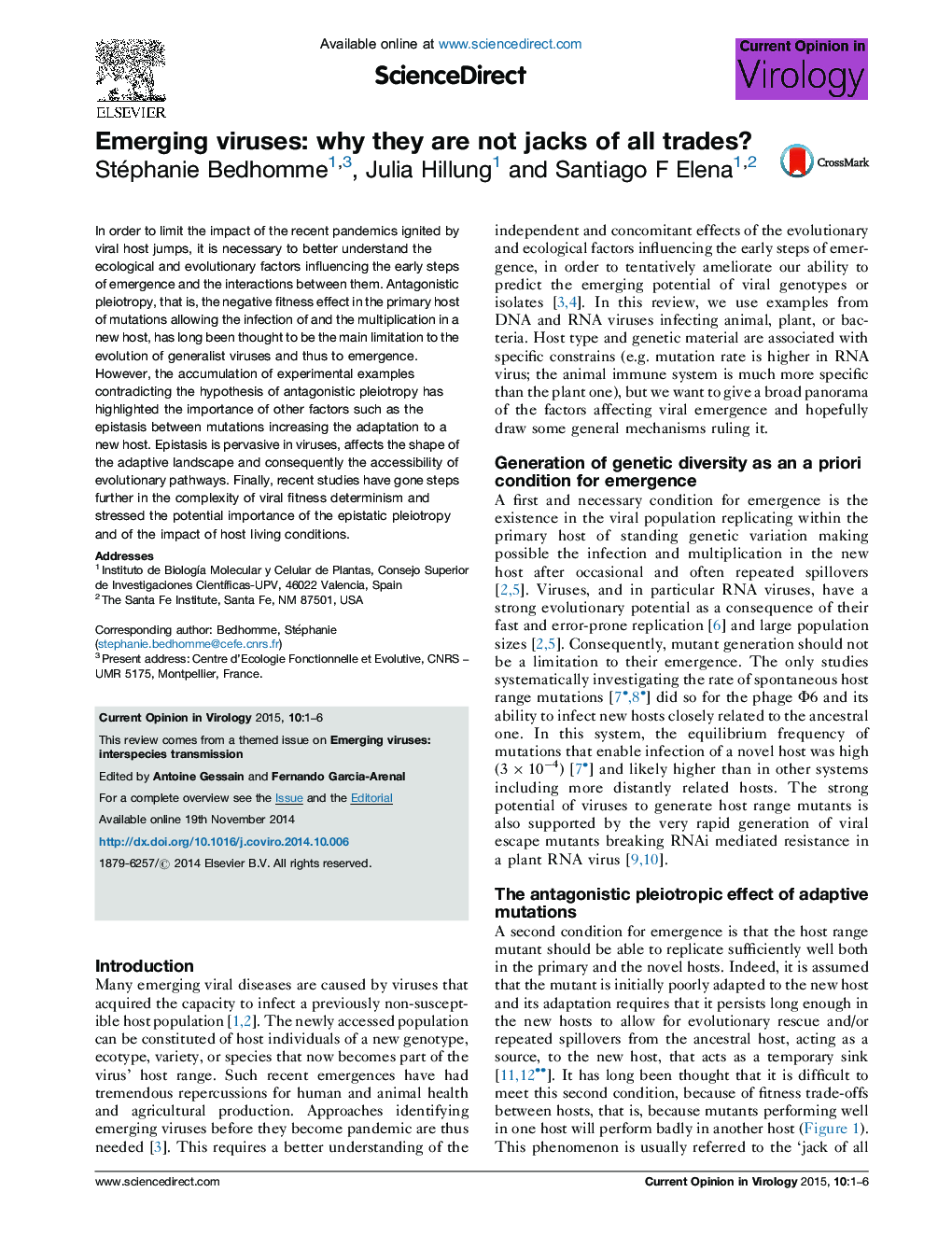| Article ID | Journal | Published Year | Pages | File Type |
|---|---|---|---|---|
| 2473223 | Current Opinion in Virology | 2015 | 6 Pages |
•The generation of host-range mutants is usually not a limiting factor in viruses.•Antagonistic pleiotropy partially limits the evolution of generalist viruses.•Epistasis constrains the accessibility of adaptive pathways.•Fully understanding viral emergence requires integration of higher order interactions.
In order to limit the impact of the recent pandemics ignited by viral host jumps, it is necessary to better understand the ecological and evolutionary factors influencing the early steps of emergence and the interactions between them. Antagonistic pleiotropy, that is, the negative fitness effect in the primary host of mutations allowing the infection of and the multiplication in a new host, has long been thought to be the main limitation to the evolution of generalist viruses and thus to emergence. However, the accumulation of experimental examples contradicting the hypothesis of antagonistic pleiotropy has highlighted the importance of other factors such as the epistasis between mutations increasing the adaptation to a new host. Epistasis is pervasive in viruses, affects the shape of the adaptive landscape and consequently the accessibility of evolutionary pathways. Finally, recent studies have gone steps further in the complexity of viral fitness determinism and stressed the potential importance of the epistatic pleiotropy and of the impact of host living conditions.
